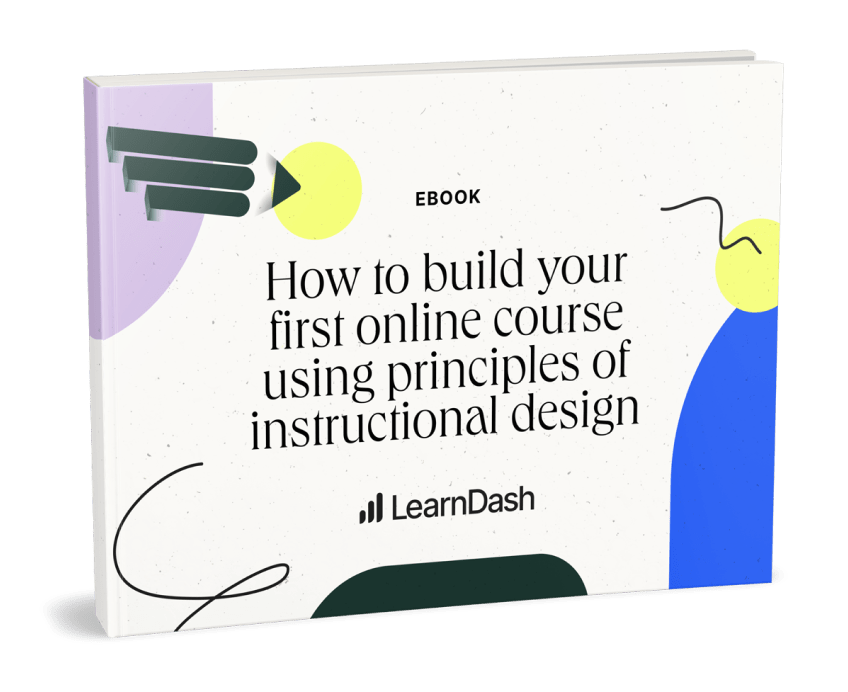
How Does Instructional Design Affect Executive Function?
There are two parts to designing any course. There is the content itself (the subject matter you are an expert in), and then there’s the instructional design.
Many instructors start out in online education because they know their subject matter very well. However, unless they’ve taken teaching courses, they usually have a lot to learn about how to deliver that content.
It’s important for online educators to learn about instructional design. Without understanding key principles—including ideas about the psychology of learning—they may struggle to create courses that are useful and engaging to learners. In the worst case scenario, they may see their learners struggling to keep up with a course, and not know why.
One psychological idea that is relevant to both instructional design and student success is that of executive function.
“Executive function” is the term to describe the higher-order mental processes that control impulses, remember instructions, plan, and stay focused. Individuals have varying levels of executive function. Some are born with high levels, characterized by an ability to remain focused and “in the moment” as much as necessary. Others, such as those with ADHD, have low executive function and struggle to stay on task.
Executive function can improve over time. It can also be diminished by factors such as stress, anxiety, or trauma. A person who is struggling with executive function issues needs an instructor who is aware of those difficulties. Instructors can also help learners through design choices that support a learner’s ability to prioritize while also removing distractions. Here’s how.
1. Remove distractions and visual clutter.
Any person who describes themselves as “easily distractable” knows how difficult it is to stay focused. A lesson with sidebars, menus, and buttons beg for their attention. Learners with executive function problems may be trying their best to resist these temptations. However, the willpower it takes to avoid them becomes a drain on their learning. They may avoid navigating off screen, but the effort keeps them from remembering key content, and they may leave faster because they feel burnt out.
Removing unnecessary distractions helps the learner keep their energy on the coursework. LearnDash has a “focus mode” feature designed to reduce visual clutter on the screen. When enabled, it hides extraneous sidebars so that the learner can keep their attention on the content.
2. Use visual cues to establish hierarchy and priority.
Many learners who struggle with executive function also struggle to set priorities and make plans. If they see several tasks, they may put off doing any because they can’t make up their minds.
Help remove your learner’s hesitations by creating task priorities. Also, arrange information on your site to show what is the most important. Use headers to guide learners through blocks of text. Avoid using too many call out boxes with unnecessary information. Label important information that your learners need to remember.
3. Post a schedule and create reminders.
Time management is a key executive function task. While you can’t hand-hold your learners, you also don’t have to leave everything up to them. When it comes to time management, support your learners by posting the course schedule and sending out reminders for due dates. Post time estimates for how long you think each step will take. This can help a learner plan when they will get the work done, and can reduce procrastination if they see the next step will only take a few minutes.
4. Use visual aids to help learners remember processes.
Infographics and other visual tools can also help learners remember processes. This is critical in areas where thoroughness and attention to detail are requisite qualities. Create an infographic that walks learners through the steps to reduce instances of user error caused by poor memory.
5. Create branching scenarios to promote impulse control, emotional control, and self-monitoring.
Branching scenarios are one of the most useful and innovative tools in the instructional designers tool box. A branching scenario helps learners practice probable real-life situations. This helps identify areas where they might be struggling and gives them an opportunity to practice ways to improve. This can help with impulse control (a lack of inhibitions), emotional control (responding to criticism), and self-monitoring (awareness of how well they understand the learning material).
6. Apply gamification to encourage learners with task initiation.
Those with executive function problems are typically serial procrastinators. Not only do these learners struggle to focus on what they’re doing, but they struggle to even get started. Gamification can improve task initiation. Gamification builds engagement and lowers the barriers to initiating course work. Add in a simple gaming element, and learning can feel fun.
Here are some simple strategies for easily adding gamification:
7. Check in with learners who are falling behind.
Finally, if you notice a learner is struggling, don’t leave them to flounder alone. Be proactive in reaching out to your learners and asking them if they need help. Offer time slots to connect via video chat. Prepare some options you could offer to support them that are manageable for you.
Executive function problems are common, but your course can help learners stay focused.
Many learners struggle with executive function problems. These may present as distractedness, repeated mistakes, late work, absentmindedness, and general frustration.
As an instructor, you are not without tools to support your learners. Design a course that reduces distraction, helps learners create priorities, makes engagement easier, and visually demonstrates priority. With these tools, you’ll have come a long way toward helping your learners to success.
Check out how learners can remain focused by exploring the LearnDash demo today.

Rachel Kolman
@LearnDashLMS







